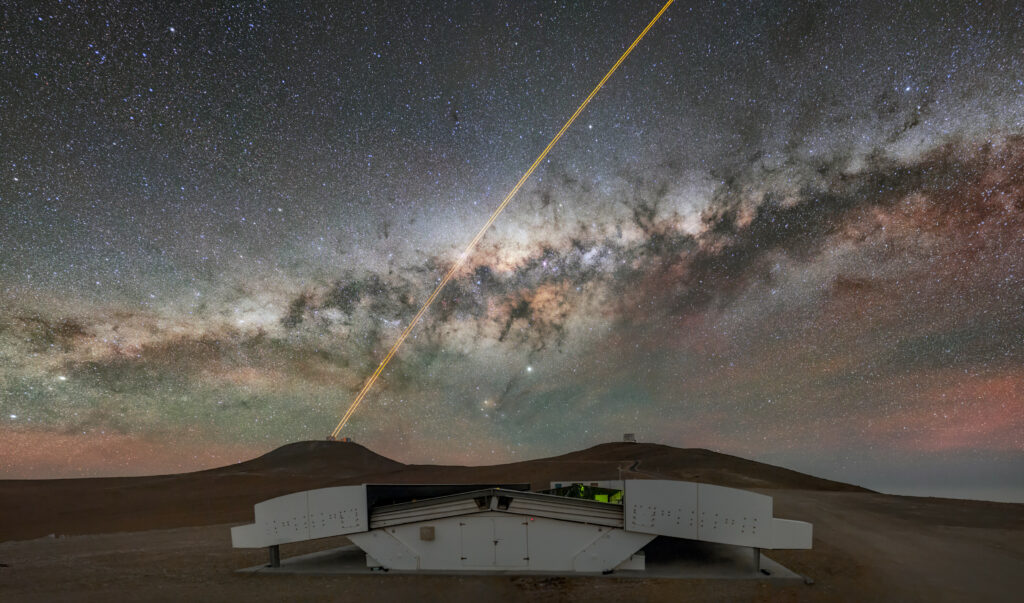The presented photo shows a magnificent strip of the Milky Way stretching in the sky over the Chilean Atacama Desert. This harsh corner of our planet is home to several astronomical institutions, including the Paranal Observatory, in which buildings can be seen both in the foreground and in the background.

The building in the foreground is a new generation NGTS (Next Generation Transit Survey) installation built by a collaboration of European institutions, designed to search for transits. It consists of telescopes that continuously monitor hundreds of thousands of stars. The installation tracks changes in their brightness. The fact is that when an exoplanet passes between its parent star and us, it slightly weakens the brightness of the star we observe, which is what NGTS receivers register.
The main goal of NGTS is to search for super-earths — exoplanets that are more massive than our Earth, but lighter than ice giants like Neptune. The installation works in conjunction with other telescopes of the Paranal Observatory, which are visible in the distance on the horizon: the VLT complex (left) and the VISTA Visible and Infrared Survey Astronomical Telescope (right).
When NGTS registers new exoplanet candidates, specialized instruments installed on VLT and VISTA, such as HARPS and ESPRESSO spectrographs, make more detailed observations. Their capabilities allow us to determine the masses of newly found exoplanets and the composition of their atmospheres.
You can also pay attention to the rays stretching from one of the VLT telescopes. These are lasers of an installation designed to create artificial stars in the upper atmosphere. They are used to estimate the parameters of atmospheric turbulence, which makes it possible to increase the accuracy of observations.
According to https://www.eso.org
Follow us on Twitter to get the most interesting space news in time
https://twitter.com/ust_magazine

